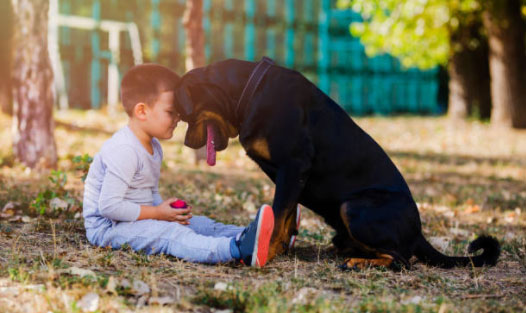Giant dog breeds are susceptible to certain health problems, that are not commonly seen in small breeds, which can cause them immense discomfort. Some of these conditions can be life threatening to them, so it is important to get your dog treated in time. As a pet owner, it’s your responsibility to care for your dog’s health and get appropriate treatment. You may not know when these health issues may arise in giant breeds, but if you are familiar with the symptoms of sickness, you will be able to provide prompt treatment.

Some of the common health issued faced by giant dog breeds include-
Arthritis
Arthritis affects one or more joints in large dogs, especially older ones and it is termed as Degenerative Joint Disease. In this condition, the cartilage surrounding the joints starts to deteriorate and it progresses gradually, leading to permanent damage. The loss of cartilage causes the bones to rub against each other, thereby causing great pain to your dog.
Causes and symptoms
- Dogs carrying excess weight are highly susceptible to arthritis. You must ensure your giant dog breed has a proper, healthy weight.
- You may notice inflammation in the joints, and the dog becomes reluctant to climb steps.
- Struggles to rise up and avoids jumping.
- Walk changes and appears to be stiff.
Hip Dysplasia
In this condition, the hip joints misalign. This improper formation causes the joints to deteriorate slowly. Hip dysplasia is very common in giant breeds and causes uncomfortable pain, leading to a decrease in quality of life.
Causes and symptoms
- This condition in giant dog breeds is caused by genes in certain cases and excessive growth is another contributing factor. Weight gain can be managed with right diet to prevent this problem.
- Some dogs may not have much trouble with hip dysplasia and may even live normal lives, but others may need surgery to help them walk again.
- Affected dogs show intolerance to exercise and become inactive.
- You may notice change in gait, which looks more like hopping.
Elbow Dysplasia
This condition affects the front legs of giant breeds and is caused by abnormalities in elbow joints. Similar to hip dysplasia, some dogs with elbow dysplasia may live their lives normally and others may require surgery to help with the pain. The condition may get worse with age and weight.
Causes and symptoms
- Excessive weight, genetics and environmental factors can cause elbow dysplasia in giant dogs.
- The affected dogs have difficulty in moving, lying down or getting up.
- They turn sluggish and unresponsive.
Bloat, Gastric Dilation Volvulus
Bloat occurs when the stomach in dogs fills up and expands with gas. This can lead to stomach twisting and inversion. This is a very serious condition termed as Gastric Dilation Volvulus(GDV) and can be life threatening, if not diagnosed in time and treated. It often requires emergency surgery to correct the issue. Giant breeds with deep set chests are more at risk of developing this condition.
Causes and symptoms
- Bloated or swollen appearance of the stomach is the main indication of GDV, also called torsion.
- Retching or vomiting
- Excessive drooling
- Collapsing
Dilated Cardiomyopathy
This is a condition known as enlarged heart, where the walls become too thin and the heart chambers grow in size, leading to its improper functioning. This cannot be cured, so the affected dog will need care and medication as long as it lives.
Causes and symptoms
- Because the heart doesn’t pump blood properly, it leads to buildup of water close to the heart and lungs.
- Panting, increasing more and more is one of the signs of this condition.
- Dogs become weak and intolerant to exercise.
It may also lead to collapse and sudden death.





